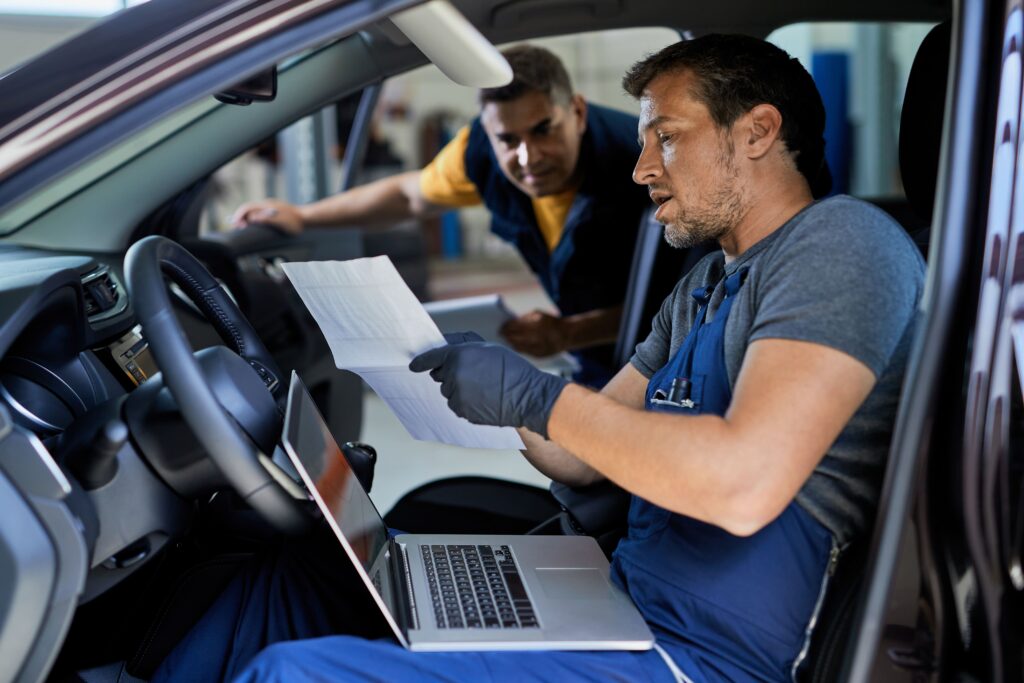The transportation and logistics industry keeps changing with changing trends and developments, and so should your training. Static PDFs or traditional classroom training are no longer sufficient for today’s fleets. To remain compliant, efficient, and safe, fleet managers are looking to cutting-edge LMS platforms that provide flexible, scalable, and quantifiable fleet training.
Why Is Fleet Training Important, And What Is An LMS Course For That Purpose?
A learning management system, or LMS, is a digital training platform that enables businesses to distribute, oversee, and monitor training materials in an organised and expandable way. It’s more than just convenient for the trucking industry; it’s an essential tool for maintaining driver safety, guaranteeing regulatory compliance, and keeping drivers informed.
Why fleet training is revolutionised by an LMS:
- Delivers Uniform Training On Your Entire Fleet: Regardless of where your drivers are based, everyone gets the same great content, eliminating knowledge gaps and enhancing overall safety.
- Facilitates FMCSA And DOT Compliance: Through integrated certification tracking, renewals, and required modules, an LMS ensures you remain ahead of inspections and lower violations.
- Allows On-demand Driver Learning: Drivers can use the training modules from their tablet or smartphone so that learning is accessible even at rest stops or during time off.
- Reduces Training Costs In The Long Run: Digital delivery does away with the need for classroom facilities, printed material, and instructor travel, saving costs in a big way.
- Offers Data-driven Insights Into Learning Status: You can monitor each driver’s performance, completion rate, and test scores to spot top performers or drivers who need extra support.
How To Select The Best LMS Platform For Fleet Training
It’s not about the cost of an LMS for your fleet training program, it’s about finding the right fit. The wrong platform will result in low engagement and wasted investment, whereas the right one will dramatically improve your training ROI.
What to expect in a fleet-capable LMS:
1. Pre-made modules for driver and fleet training
Make sure the platform provides trucking-specific content, such as defensive driving, hazardous materials handling, ELD training, and HOS (Hours of Service) regulations.
2. User interface optimised for mobile
For truckers who are constantly on the go, a good LMS should be simple to use on smartphones and tablets and offer offline access when necessary.
3. Interactive, short-form educational options
Short, direct lessons are preferred by drivers. For improved retention, pick an LMS that offers gamified content, simulations, videos, and quizzes.
4. Automated monitoring and notifications for compliance
Seek out the ability to send reminders if a certification is near expiration or if a refresher course is due, so no one ever misses important deadlines.
5. Advanced analytics and reporting
The system should enable managers to monitor course completion, quiz results, and learner participation so they can make informed training adjustments.
Advanced LMS For Fleet Training: Step-by-Step Procedure Guide
For creating a high-performance LMS course for fleet training, you must have a thoughtful design alongside some real-world context and tools. Here’s how we do it at MetroMax BPM:
Step 1: Set your learning objectives
First, define your goals. Are you aiming at reducing accident rates? Enhancing ELD usage? Standardising new driver onboarding? Well-thought-out objectives will craft the course anatomy.
Step 2: Recognise skill gaps and compliance needs
Once incidents have occurred, reports, audit findings, and driver feedback as to where the team has fallen short become a very important tool in your training arsenal, especially to ensure training truly addresses the weaknesses.
Step 3: Identify the LMS platform
A platform suitable for your particular business model needs to be identified: choose one that integrates systems like dispatch and HR and provides mobile access to your drivers.
Step 4: Draw a course framework
The course should be broken down into the following modules:
- Company policies introduction.
- Safety standards and defensive driving.
- ELD and telematics system trainings.
- Cargo handling and accident reporting.
- Customer communication and soft skills.
Step 5: Create interesting content
Use a variety of formats, including voiceovers, infographics, short films, real-world situations, and tests. When the content reflects real-world scenarios, drivers retain it better.
Step 6: Use a test group to pilot the course
Using a minor team of drivers, test the material. Get input on the module’s length, usability, and content clarity. Utilise this for enriching the experience.
Step 7: Start and keep an eye on
Launch the course across the entire fleet. Track who is finishing what, who is having trouble, and what needs to be revised by using reporting dashboards.
What Should Be Included In Trucking E-Learning
The success of any trucking e-learning course depends on how relevant and well-communicated its content is. Your material should focus on solving issues the drivers face daily.
Must-have content areas for trucking e-learning:
a. Onboarding And Orientation: Introduce drivers to your company and safety culture, as well as expectations for the job and tools they will be using.
b. Safe Driving And Hazard Awareness: Discuss accident prevention, road hazard recognition, weather conditions, and emergency procedures.
c. Cargo Handling And Securement: This program will train the driver on the correct loading methods, weight distribution, and tie-down procedures, as well as safety methods for unloading.
d. Fatigue Management And Wellness: Teach about sleep hygiene, effects of long hours, and the benefits of mental and physical fitness through life on the road.
e. Digital Tool Usage And ELD Compliance: Offer hands-on training for devices and apps such as ELDs, GPS systems, route planners, and telematics dashboards.
f. Communication And Customer Interaction: Help drivers professionally handle customer inquiries and be a good representative for your brand.
How LMS Training Enhances Trucking Operations Compliance
In the trucking industry, regulatory compliance is complicated, and non-compliance can be expensive. A robust LMS guarantees that your team consistently satisfies the requirements.
How driver compliance is enhanced by an LMS:
A. Maintains Current Certifications And Training: Automatically alerts the admin team and the driver when recertification or renewal is due.
B. Makes Compliance Materials Instantly Accessible: Anytime they need a refresher, drivers can go over the most recent rules, safety protocols, and inspection checklists.
C. Permits Retraining Following Incidents: Instantaneous assignment of post-incident modules guarantees that drivers learn from their errors and reduce recurring problems.
D. Produces Digital Evidence For Inspections And Audits: You possess a comprehensive, time-stamped record of who received training, when it was conducted, and their performance, essential for passing internal audits or DOT.
E. Promotes An Accountable Culture: Frequent self-evaluations and microlearning help drivers develop better driving habits and reinforce accountability.
How LMS Aids In Upcoming Transportation And Fleet Trends
Your LMS should prepare your fleet for the transportation of the future, not just satisfy the demands of the present.
The following future trends should be supported by your LMS:
A. Driver Education For Electric Vehicles (EVs): Instruct drivers on how to safely and effectively operate, charge, and maintain electric trucks.
B. Urban Driving Abilities And Last-mile Logistics: Assist drivers in navigating congested urban areas and adjusting to shorter delivery windows.
C. Using Telematics For Behavioural Coaching: To provide individualised training based on dangerous driving behaviours like speeding or harsh braking, integrate your LMS with fleet monitoring tools.
D. Eco-friendly Driving Techniques: Encourage eco-friendly route planning, idle-time reduction, and fuel-efficient driving practices.
E. Mobile-first Microlearning: Provide drivers with brief, frequent content bursts that they can finish without a desk or laptop.
Why Choose MetroMax BPM To Get Fleet Training With LMS Solutions?
MetroMax BPM is positioned ideally to serve the logistics industry as it understands its peculiar challenges and goals. Rather than just build LMS solutions, we provide training ecosystems.
What sets MetroMax BPM apart:
Customised LMS development for logistics
Every fleet is uniquely different. We design your LMS from scratch to fit your operational requirements and regulatory obligations.
Expert-developed trucking e-learning content
Content designed by professionals who know trucking, the only way to have realistic, clear, and useful training.
Integrations for HR, dispatch, and telematics
Link training with every other facet of your operation for one truly centralised system.
Insightful analytics and reporting tools
Real-time monitoring of training in the performance of certificates, while delineating compliance gaps.
Scalable platforms for growing fleets
The systems are scaled with your growth, irrespective of whether you have 10 or 1,000 drivers. This scaling is done without any compromise on the platform’s performance.
Conclusion
With more regulation and more turnover, depending on an outdated LMS may put your business at risk. An advanced LMS is more than just a simple grade software application. An advanced learning management system is a competitive advantage, not just a convenience. Trucking e-learning for fleet training keeps your operations smart, safe, and scalable, whether you’re onboarding new drivers, updating safety procedures, or getting ready for future innovations like EVs.













